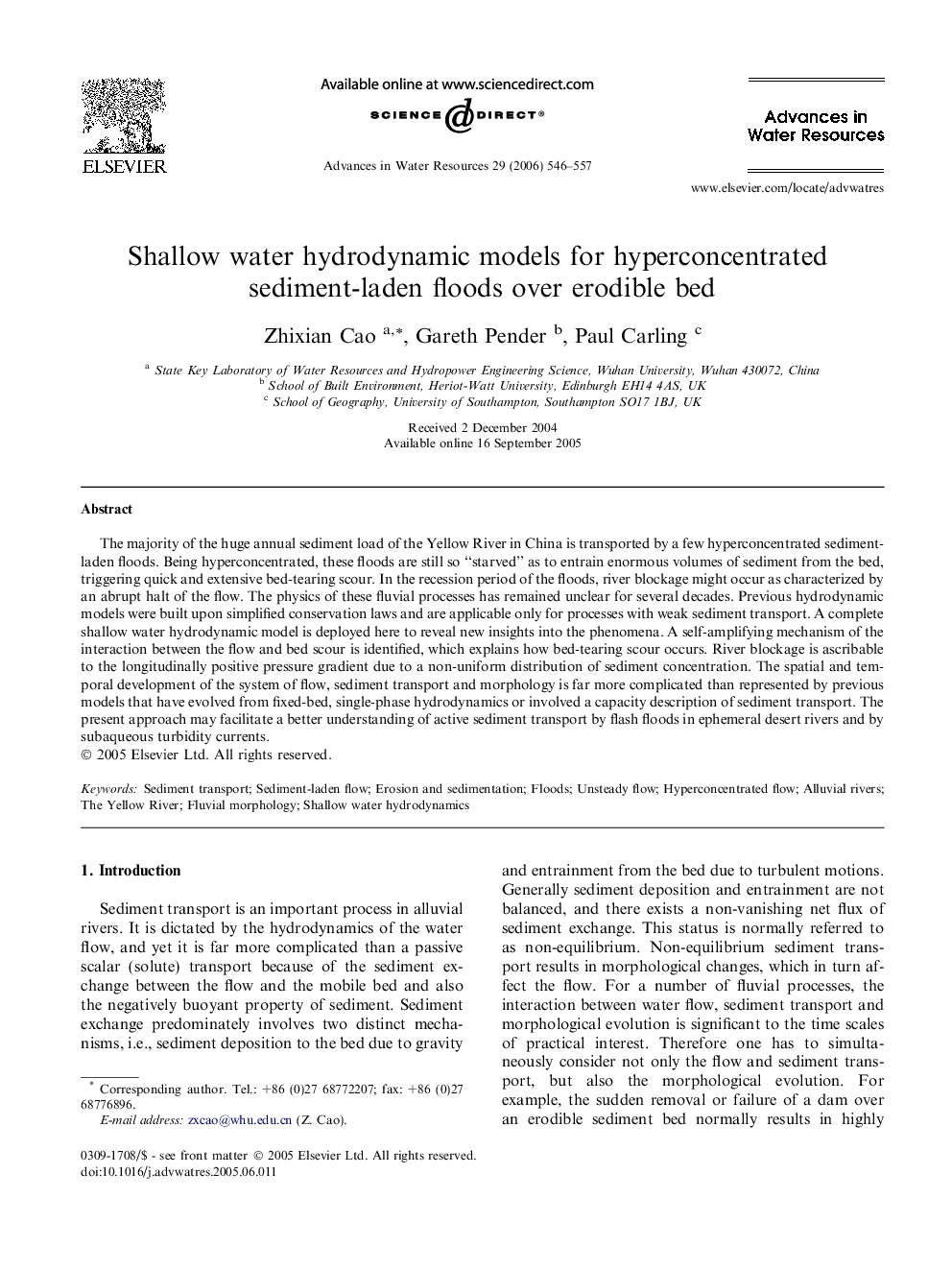| Article ID | Journal | Published Year | Pages | File Type |
|---|---|---|---|---|
| 4526810 | Advances in Water Resources | 2006 | 12 Pages |
The majority of the huge annual sediment load of the Yellow River in China is transported by a few hyperconcentrated sediment-laden floods. Being hyperconcentrated, these floods are still so “starved” as to entrain enormous volumes of sediment from the bed, triggering quick and extensive bed-tearing scour. In the recession period of the floods, river blockage might occur as characterized by an abrupt halt of the flow. The physics of these fluvial processes has remained unclear for several decades. Previous hydrodynamic models were built upon simplified conservation laws and are applicable only for processes with weak sediment transport. A complete shallow water hydrodynamic model is deployed here to reveal new insights into the phenomena. A self-amplifying mechanism of the interaction between the flow and bed scour is identified, which explains how bed-tearing scour occurs. River blockage is ascribable to the longitudinally positive pressure gradient due to a non-uniform distribution of sediment concentration. The spatial and temporal development of the system of flow, sediment transport and morphology is far more complicated than represented by previous models that have evolved from fixed-bed, single-phase hydrodynamics or involved a capacity description of sediment transport. The present approach may facilitate a better understanding of active sediment transport by flash floods in ephemeral desert rivers and by subaqueous turbidity currents.
